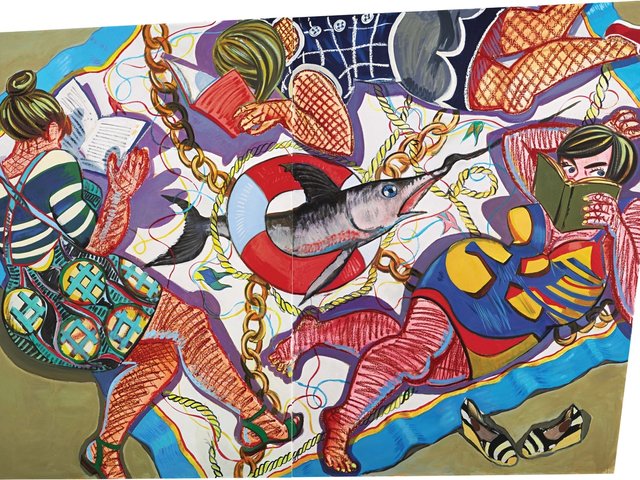London
While the October post-war and contemporary evening auctions produced solid but lacklustre results across the board, the Italian sales were the auction highlights of Frieze week.
Christie’s started well, setting a new record total at £27.6m (though within its estimate of £22.4m to £32.3m), but Sotheby’s sale exceeded expectations the following night when Piero Manzoni’s white Achrome, 1958-59, sold for a record £12.6m (est £5m-£6m) after a heated battle between eight bidders, propelling the sale’s total to £41.4m. This was the top price paid across the London auctions last month, heralding what Claudia Dwek, the deputy chairwoman of Sotheby’s Europe, called “a new dawn for Italian art”.
Both rooms were packed to capacity and bidding was strong on the phone and on the floor, with many dealers, including the Nahmads, Ben Brown, Luigi Mazzoleni, Giulio Tega and Nicolò Cardi, snapping up works.
The colour white was the most popular with buyers, as four of five artist records at Sotheby’s—Manzoni, Agostino Bonalumi, Turi Simeti and Enrico Castellani—were set by white works (the other record was for Dadamaino). Castellani’s Superficie Bianca, 1967, went for £3.8m (est £1m-£1.5m), helped (like the Bonalumi and Simeti) by coming from the respected collection of Giobatta Meneguzzo, who had commissioned the works for his home in Malo, Veneto.
Christie’s set records for Piero D’Orazio, Marina Apollonio and Carla Accardi, showing that collectors are also keen to buy works by lesser-known artists from the same period. But the star of the sale was the well-known Alighiero Boetti, whose unique paper sculpture of what looks like a classical marble column, Colonna, 1968, considered by some to embody the term Arte Povera (literally “poor art”), set a record for the artist at £2.4m (est £1.5m-£2m).
Meanwhile, ahead of Alberto Burri’s show at the Guggenheim in New York next year, Combustione Plastica, 1956, sold at Christie’s for £1.5m (est £1m-£1.5m) while Rosso Nero, 1955, was bought in after failing to reach its lower estimate of £1.5m, but found a buyer immediately after the sale for £1.3m).
Last month, ahead of Frieze week and the auctions, The Art Newspaper reported that Italy’s strict export rules are causing Italian collectors to rush to sell their works abroad before they become eligible for an export ban (any work more than 50 years old by a dead artist, regardless of value, can be blocked). And many of the top-selling post-war works consigned from Italian collections were dated from 1964 onwards, just short of the 50-year cut-off. The collectors who consigned Boetti’s 1968 Colonna sculpture to Christie’s said they were sad to see it go but would rather sell it now than have it blocked in Italy in the future. Manzoni’s museum quality, record-breaker at Sotheby’s, dated 1958-59, was sold by a private European collector who bought it from a Swiss collection in 2006, suggesting that the work only made it to auction because it was already held outside Italy.
A hit across the board
Post-war Italian art also sold well at Frieze Masters and the Pavilion of Arts and Design. The London-based dealer Ben Brown sold a 12-panel work by Boetti, Mettere Al Mondo Il Mondo a Roma Nella Primavera dell’Anno Millenovecentosettantotto Pensando a Tutto Tondo, 1978, for just over €2m (£1.6m) at Frieze Masters, while Robilant + Voena sold a range of works by Lucio Fontana, Castellani, Bonalumi and the newly popular Paolo Scheggi at both fairs. Scheggi’s work, also on show at the gallery’s headquarters in Mayfair, is proving a hit, especially with American collectors “who still see it as a good investment compared with post-war American art”, says Alessandro Galli, who works at the gallery. Luigi Mazzoleni, who opened a space in Mayfair during Frieze week, says that all his buyers were foreign: “Everyone is interested in Italian artists now.”
The trend continues: Sotheby’s is opening a selling exhibition at S|2 in London of works by Dadamaino, on 20 November (until 16 January 2015).


